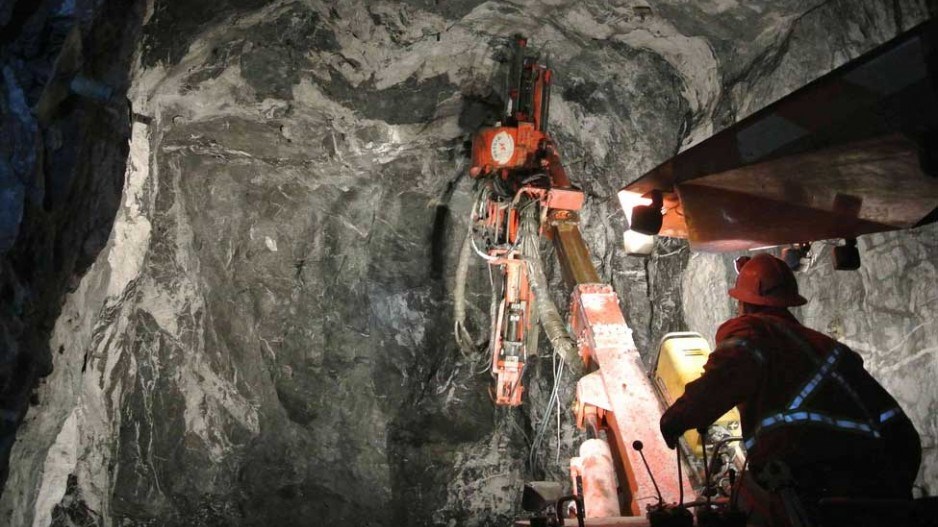Surely, by the end of 2014, falling commodity prices would have found their bottom and someone would have shot that damned bear.
That was the hope for Canada’s mining sector in 2014.
But as Hallgarten & Co. mining strategist Christopher Ecclestone recently suggested, the industry may finally be waking up to the realization that the current situation is more about hog cycles than bear markets.
“It has taken the market four long years to finally grasp that the mining supercycle is dead,” Ecclestone recently wrote.
So just how bad was 2015 for mining?
Five mines in B.C. were placed in care and maintenance in 2015, resulting in 1,800 layoffs – 17% of the industry’s workforce, according to the Mining Association of BC.
Vancouver-based Finning (TSX:FTT) – whose biggest markets in Canada are the mining and oil and gas sectors, and which had already cut staff by 1,900 in 2015 – announced in November it will cut a further 1,100 jobs in Western Canada and South America, following a 27% decline in new equipment sales in the second quarter.
In November, Teck Resources (TSX:TCK.B) – B.C.’s largest mining company – announced drastic cuts to cope with falling revenue from low copper and metallurgical coal prices, including cutting dividends and laying off an additional 1,000 employees.
Last week, Anglo American PLC – one of the world’s biggest mining companies – announced it would lay off 85,000 employees (63% of its workforce) and sell off or shut down some of its mines and smelters. Other major mining companies have likewise been slashing jobs and shelving projects.
Key mining commodities for B.C. are metallurgical coal, copper, gold and zinc. Copper prices approached a seven-year low in December, and zinc and gold are at five-year lows. Metallurgical or “met” coal has fallen below the US$90 mark – less than one-third what it was in 2011.
Most of the mines shuttered in B.C. were met coal, which is used in making steel and is B.C.’s single largest export.
Production curtailments at B.C. coal mines decreased shipments through Prince Rupert’s Ridley Terminals by 50% in 2015’s first half compared with 2014, resulting in a net operating loss of $12 million.
While producing mines are losing money, junior exploration companies are being starved of capital.
The TSX Venture composite index – heavily weighted with junior exploration companies – was down 27% in 2015 and is down 76% since 2011, when a decade-long supercycle driven by growth in China started winding down and commodity prices began to fall.
A total of 187 junior mining and exploration companies have been delisted from the TSX Venture Exchange since 2011. Half of those were in the last two years – 55 in 2014 and 43 in 2015, as of October. Only one of the delistings in 2015 was due to a company moving up to the big board.
According to a recent PwC report on Canada’s junior mining sector, market capitalization dropped from $7.9 billion in mid-2014 to $4.8 billion in mid-2015, and equity financing for the top 100 miners dropped 25%.
The current crisis for commodities and mining is mostly a China story.
At an Association for Mineral Exploration BC luncheon last week, financial analyst Michael Campbell pointed out that China consumes roughly half of the world’s key commodities: 54% of the world’s aluminum, 50% of nickel, 48% of copper, 46% of zinc and 45% of steel.
A decade-long growth spurt that doubled China’s economy created what Bank of Canada deputy governor Timothy Lane has described as a Chinese hog cycle, in which soaring demand for growth-
related commodities drove a flurry of new mining activities.
Now that China is transitioning to more of a consumer-driven economy, the demand for many of those commodities has fallen, leaving a glut of almost anything that comes out of the ground.
“There’s a huge overproduction, and China is a real challenge,” Campbell said.
Recent figures out of China “are not positive,” he added. China’s exports have dropped 6.8% for a fifth consecutive month and imports fell 8.7%.
Not even gold is a safe bet anymore because today’s safe-haven investment is a strong U.S. dollar.
One metal mined in B.C. that might have good prospects is copper. China’s transition to a domestic consumer economy is expected to increase demand for electronics, all of which use copper.
Campbell added that the growing adoption of electric hybrid and electric cars also bodes well for copper, because manufacturing one hybrid car uses about 110 pounds of copper and manufacturing one electric car uses about 165.
Despite a generally dismal outlook for mining, some new mine projects – most of them small – proposed for B.C. continue to move forward.
At the beginning of 2015, the new Red Chris copper mine went into production, and in September, Australian junior miner Atrum Coal NL (ASX:ATU) announced plans to build a $600 million anthracite coal mine 150 kilometres northeast of Stewart.
This summer, Pretium Resources Inc. (TSX:PVG) secured US$540 million in construction financing for its new Brucejack gold mine, and it began construction in September.




